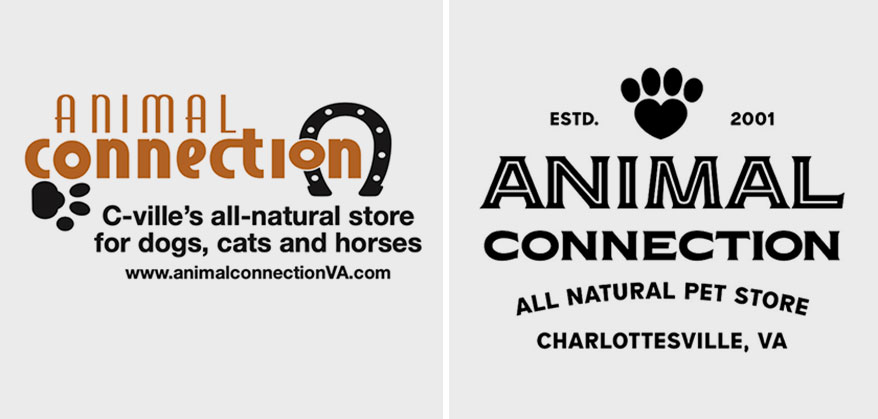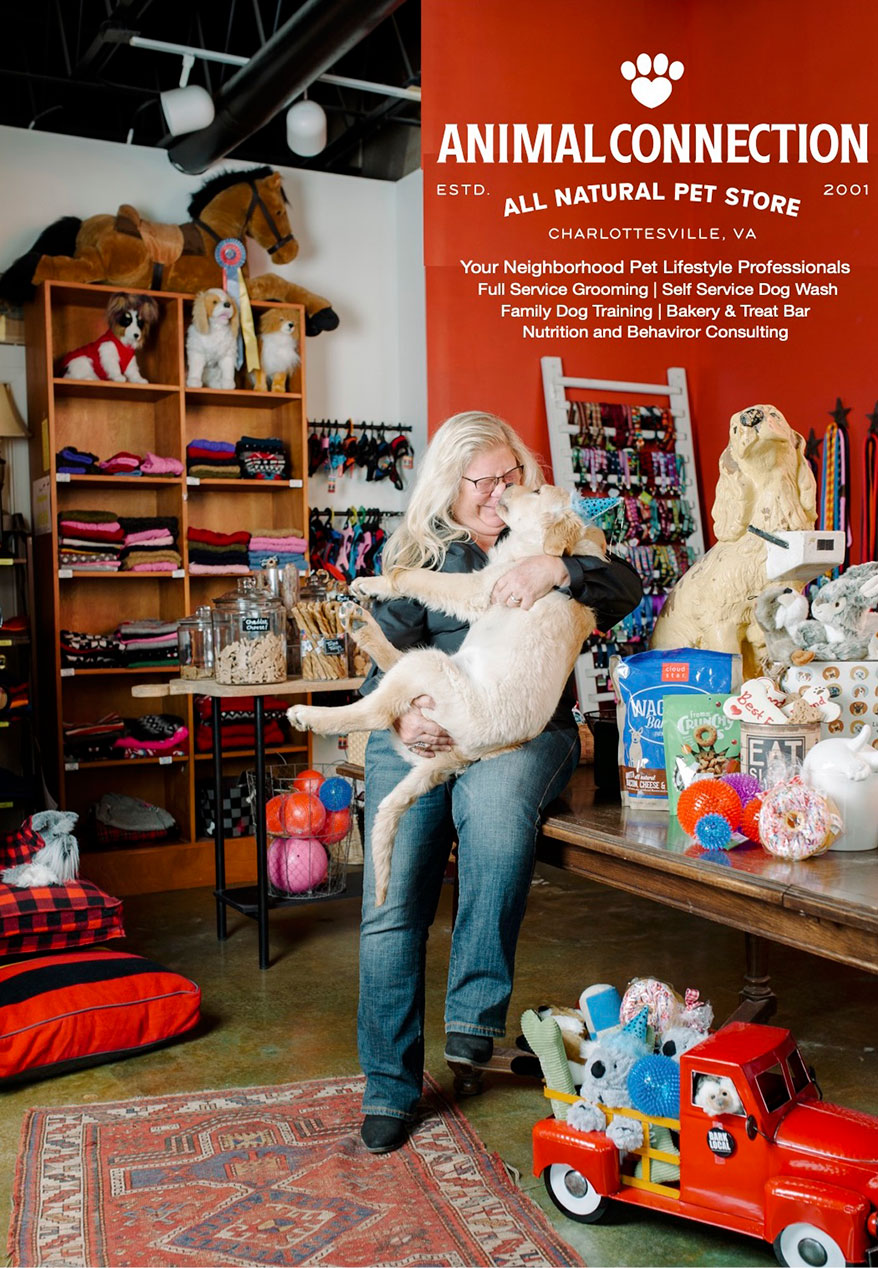YOUR LOGO WAS CREATED to be a timeless design and establish identity in your community… but is it really timeless? If it looks dated, you stand the chance of losing potential business to a new generation of customers.
At my store, Animal Connection in Charlottesville, VA, we found that after 18 years in business, combined with relocating and expanding our store’s footprint, it was time for a design change. Our challenge was to make a visual change without losing long-time brand identity and to freshen up our logo while retaining our corporate feel. As a former ad agency owner, I have always designed and produced all of my store’s branding.
Advertisement
But in this case, I realized I was “too close” to my own work and needed a completely unbiased professional. I hired J. P. Flexner, owner and creative director of his multi-award winning, branding firm from Philadelphia, PA.

(Left)My original logo; (Right) My new logo.
Here’s how I made my branding transition a seamless creative process and how you can do the same:
1. Understand your brand and what sets you apart. Is your business fun and vibrant? Serene and calming? Communicate to your designer what makes your brand and customer experience unique. The phrase “Can you explain your brand to an 8-year-old” is right on because your logo should also say what you are all about at a quick glance by a consumer. In today’s fast-moving world, you have three seconds to get someone’s attention or you’ve lost it. So, your branding needs to be crystal clear.
2. Interview potential designers like they are becoming your business partner. Your designer should understand your business model in order to communicate your brand effectively. They should visit your store and check out your vibe, or you should provide a visual portfolio or video so they can see your décor, displays, whatever makes you unique. Show them everything that carries your brand, from website, print and social media to shopping bags and swag.
3. Show your designer a “look book” of designs you admire. Many designers know their clients won’t know what they like until they see it. Make it easier for them to understand your vision with a “look book,” using logos you like from any brand of restaurant, product, clothing, retailer… whatever strikes you as cool. Maybe it’s an icon or a typeface or a T-shirt. Anything that shows the designer how you think and react to other brands is great information, and they’re not trying to read your mind.
Advertisement
4. Ask your designer to “think on paper” before they drive the computer. There’s a big difference between thinking of a concept and choosing type or a design effect to communicate the brand vs. showing what their software can do and trying to make it fit your concept. Thumbnail sketches show the creative process effectively, and you can confirm that your vision jives with the designer’s thought patterns. If either of you are off base at this point, you haven’t wasted billable hours going down the wrong path. Once you approve creative thinking on paper, it’s easy to go forward with typefaces or icons. You’ve saved money, and both of you will be comfortable during the design’s evolution.

My logo on an ad.
5. Choose a final design that works with a variety of media and promotions. When your designer submits concepts, ask for variations showing color and black/white options, a “reverse” option (white) so you can place your logo on photos or color backgrounds, and vertical and horizontal applications. Request a copy of the font to install on your own computer that correlates with the new logo, so all your signage and print can be consistent.
6. Look for opportunities for your design to create sales. Ask your designer to show you how the logo works on all branding applications you have in mind. They may even suggest new ways to vary the design, so your swag is consistently fresh. If you sell your store swag, this creates a new opportunity for recurring sales and your customers will want to collect your merch.